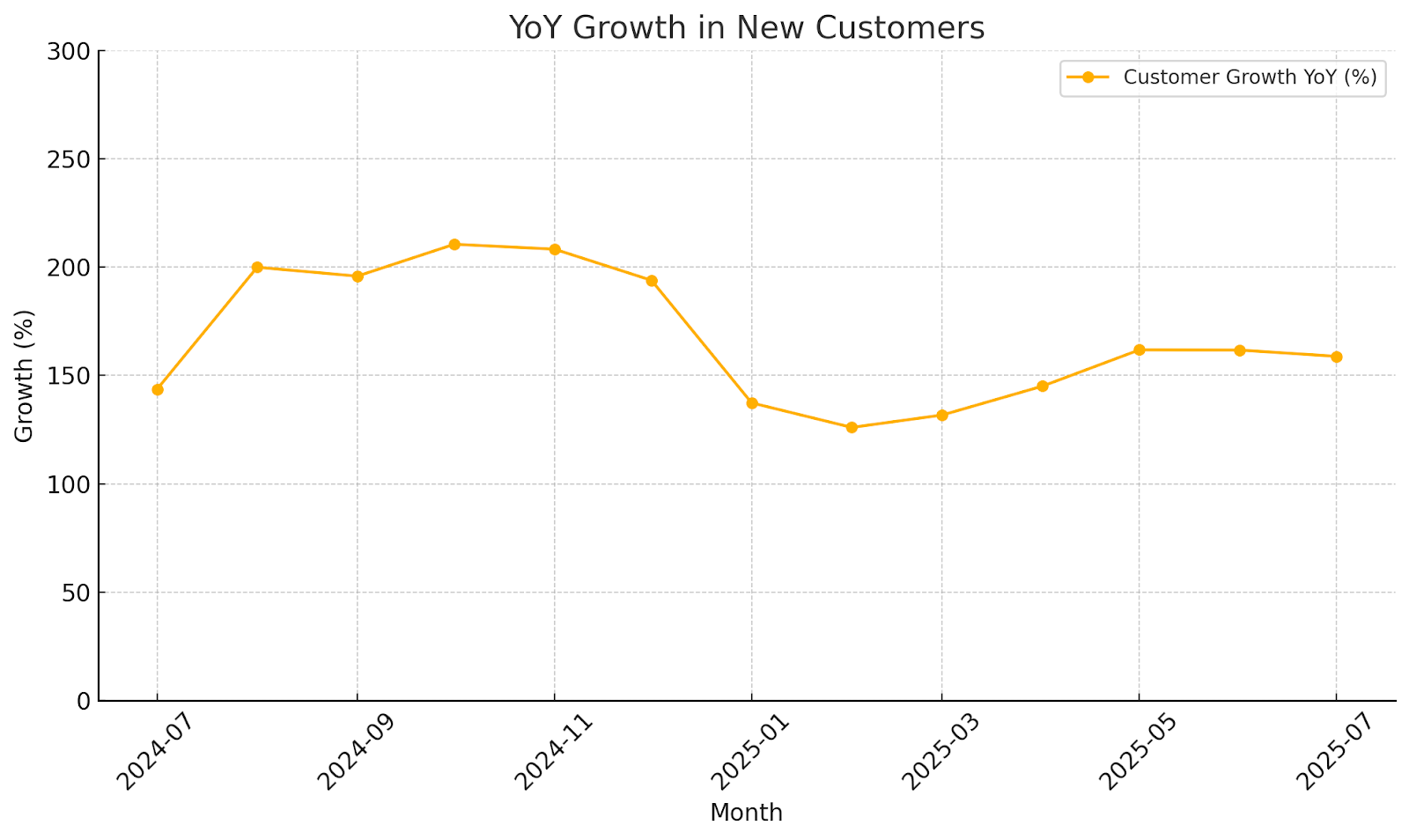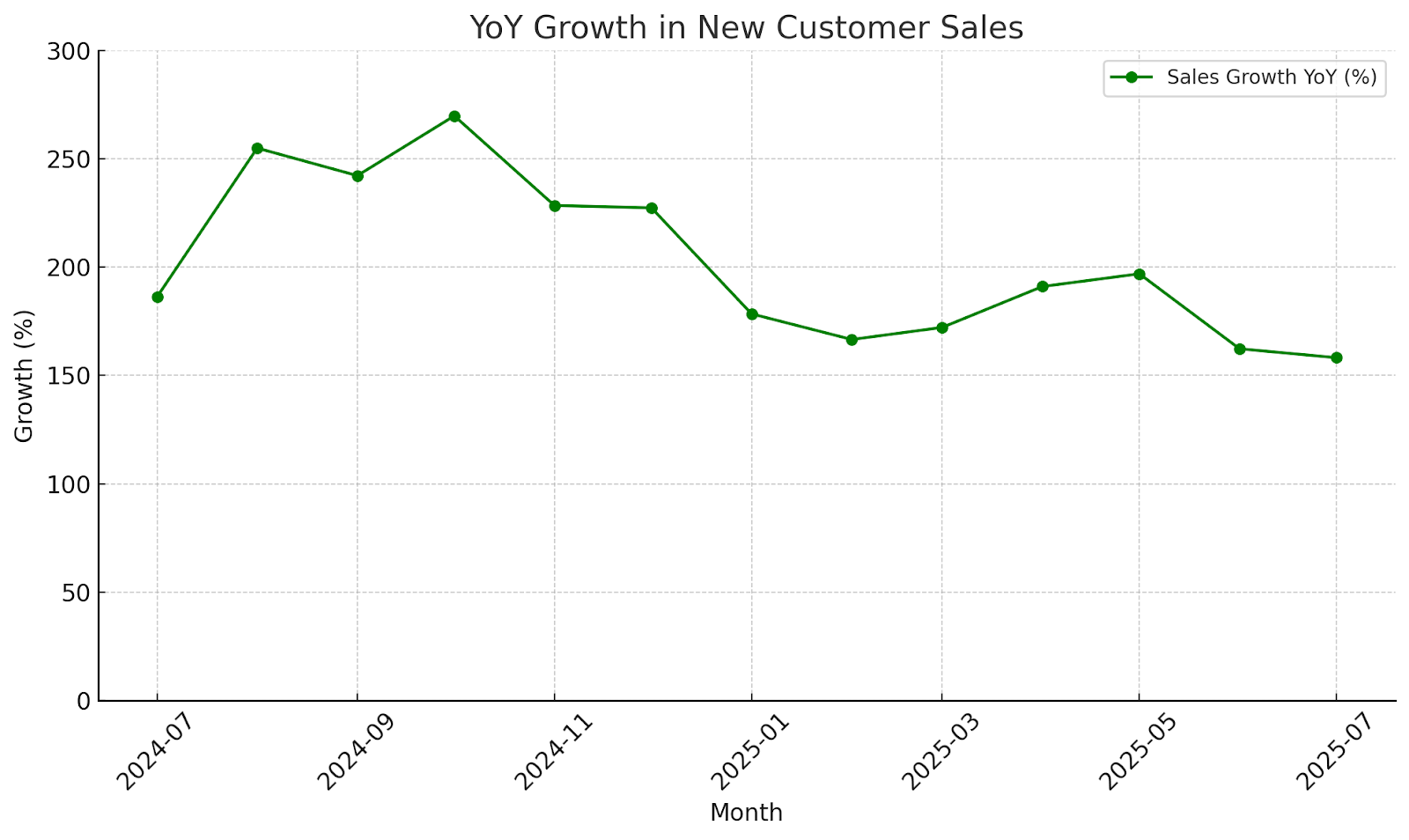All Blogs
"Aplo has been a game changer for our business, since we hired them a year ago. We’re now making informed, data driven decisions on ad spend, versus just guessing and applying incremental increases to budget monthly. I’d give 6 stars if I could."
Charlotte Tzarbi
CEO at Olive My Pickle & The Pickle Factory
Olive My Pickle, a fast-growing DTC fermented foods brand, achieved a 151% year-over-year revenue increase by combining precise paid media execution with strategic forecasting and operational planning. As their paid advertising partner and providing fractional CMO/COO services, Aplo helped guide the brand through aggressive yet margin-conscious scaling.
This case study unpacks how cohort modeling, budgeting discipline, and creative-led ad strategy combined to create compounding returns and operational stability during a breakout growth year.
When Olive My Pickle partnered with Aplo, the brand was in high-growth mode but needed clarity:
They had loyal customers and strong LTV potential, but wanted to unlock scale through paid ads without sacrificing profitability. That meant their ad strategy couldn’t live in isolation it had to align with cash flow, contribution margin, and inventory realities.
Aplo stepped in with dual responsibility:
This gave Olive My Pickle not just a performance marketing arm but a strategic growth team.
A major unlock in Olive My Pickle’s growth strategy came from our cohort-based forecasting model, designed to shift decision-making from short-term ROAS targets to long-term contribution margin clarity.
This allowed us to:
Here’s how we did it:
This allowed us to project contribution margin over time not just for the current month and gave us the confidence to set aggressive acquisition targets without sacrificing unit economics.
Forecasting wasn't theoretical. It directly drove execution across both marketing and operations:
Many ecommerce brands are overly dependent on one-time revenue. Olive My Pickle was different.
Their retention curve showed customers returning steadily 3–12 months after first purchase. By using this data in our forecasting model, we created a growth plan that relied as much on the past as the present.
This allowed us to:
While forecasting and margin modeling created the strategic runway, it was our paid acquisition engine that turned potential into actual growth.
Throughout the engagement, we more than doubled the volume of new customers YoY, and drove 2.5–3x increases in new customer revenue across multiple months. This wasn’t just from media buying — it was a result of tightly aligned strategy, creative execution, and channel infrastructure.
To ensure Meta had every opportunity to find the best-converting assets, we implemented Aplo’s dual-track creative production system:
This system allowed us to consistently feed Meta with a high volume of diverse creative, across formats video, static, UGC, branded ensuring the algorithm had as many “at-bats” as possible to find the asset most likely to convert each audience segment.
We weren’t just aiming for a few big wins — we were building a creative flywheel that gave us margin leverage, audience insights, and long-term scalability.
Because our acquisition strategy was grounded in contribution margin forecasts, we could confidently scale winning creative without fear of overspending. Every test and every scale move had a profitability model behind it.
We used the forecasts to:
The combination of high-volume creative + margin-aware forecasting is what made the growth durable not just aggressive.


Note: In several months, sales growth from new customers exceeded 2.5X YoY — indicating we weren’t just acquiring more people, but higher quality customers.
Olive My Pickle had:
✅ Achieved 151% year-over-year revenue growth
✅ Scaled acquisition while improving contribution margin predictability
✅ Used compounding return customer revenue as a growth driver
✅ Built a scenario-based forecasting model to manage risk and cash flow
✅ Aligned media buying, KPI setting, and ops into a single plan
✅ Developed a creative production system to support aggressive scale on Meta
This wasn't just paid growth. It was forecast-informed, operationally-aligned, cash-flow-sensible scaling built to last.
Most DTC brands silo performance marketing from operations. But the truth is, acquisition without modeling is just gambling.
By managing both acquisition and forecasting, we helped Olive My Pickle grow with confidence. Not faster than they could handle. Not slower than they deserved. But at a pace they could sustain and scale.
Subscribe to Ecom Weekly by Aplo Group and get access to winning strategies and insights from other 8-figure operators.
Dive into the latest insights and trending topics on all things e-commerce.